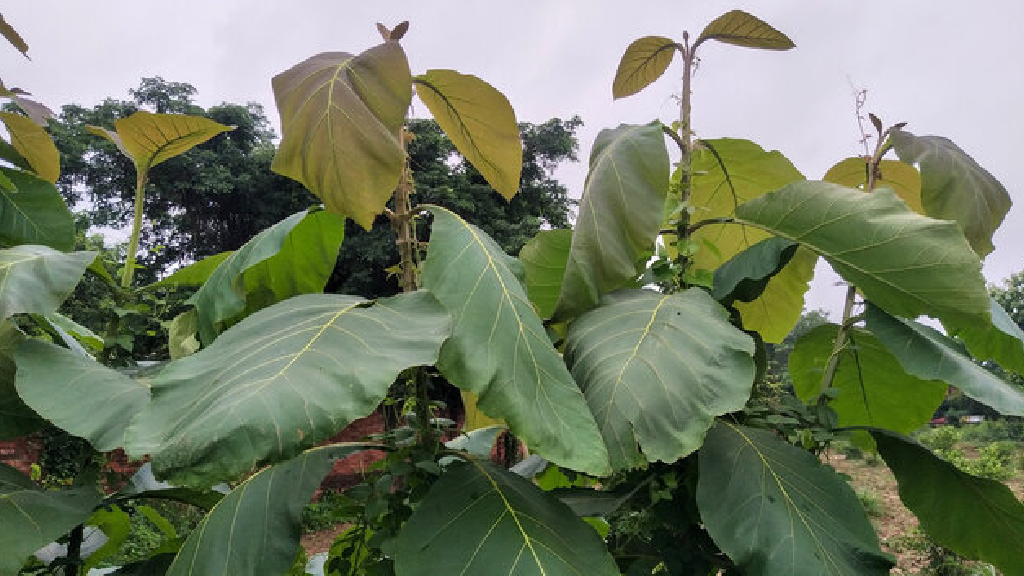Tissue Culture Teak Plants: A Revolution in Sustainable Forestry
Tissue Culture Teak Plants: A Revolution in Sustainable Forestry
Blog Article
Tissue culture teak plants have revolutionized the forestry industry by offering a high-yield and disease-resistant alternative to traditional teak propagation. With increasing demand for teak wood in the furniture, construction, and shipbuilding industries, tissue culture teak plants provide a sustainable solution that ensures superior growth rates, genetic uniformity, and adaptability to various climatic conditions. In this article, we will explore the advantages of tissue culture teak plants, their propagation process, benefits for farmers and investors, and address frequently asked questions.

What are Tissue Culture Teak Plants?
Tissue culture teak plants are produced through a scientific method called micropropagation. This involves growing plant tissues in a controlled, sterile environment to ensure healthy and genetically superior plants. Unlike traditional seed propagation, which can result in genetic variation and disease susceptibility, tissue culture guarantees uniformity, vigor, and high resistance to pests and environmental stress.
Advantages of Tissue Culture Teak Plants
1. Faster Growth Rate
Tissue culture teak plants grow significantly faster than conventionally propagated teak. While traditional teak trees take around 20-25 years to mature, tissue culture teak can reach maturity in 10-15 years, making them a lucrative choice for farmers and timber investors.
2. Higher Yield and Quality Wood
With controlled propagation, tissue culture teak plants exhibit uniform growth, producing high-quality, straight-grained wood that fetches premium prices in the market.
3. Disease-Resistant and Pest-Free
The tissue culture method ensures that plants are free from harmful pathogens and pests, reducing the risk of diseases and minimizing the need for chemical pesticides.
4. Genetic Uniformity
Since these plants are cloned from a superior mother plant, they maintain consistent traits such as growth speed, resistance to environmental stress, and wood density.
5. Sustainability and Eco-Friendliness
Teak is a valuable hardwood, and tissue culture methods help in afforestation and reforestation efforts, contributing to sustainable forestry practices.
The Propagation Process of Tissue Culture Teak
- Selection of Superior Mother Plant: A disease-free and high-yielding teak tree is selected for tissue extraction.
- Sterilization: The extracted tissue is sterilized to eliminate contaminants.
- Culturing in Growth Media: The tissue is placed in a nutrient-rich medium to encourage cell multiplication.
- Development of Shoots and Roots: Through controlled environmental conditions, shoots and roots are developed to create healthy saplings.
- Hardening and Acclimatization: The young plants are gradually exposed to natural conditions before being transferred to nurseries.
- Field Plantation: Once hardened, the plants are ready for commercial or private plantation.
Benefits for Farmers and Investors
- Higher Return on Investment (ROI): With a shorter maturity period, investors and farmers can reap financial benefits faster than traditional teak.
- Minimal Maintenance: Due to their disease resistance, tissue culture teak plants require less intervention, making them cost-effective.
- Demand in Global Markets: The demand for high-quality teak is rising, ensuring steady market value for harvested timber.
- Sustainable Business Model: Contributing to green initiatives and sustainable afforestation enhances business credibility and environmental conservation efforts.
FAQs About Tissue Culture Teak Plants
1. How do tissue culture teak plants differ from traditionally grown teak?
Tissue culture teak plants are genetically uniform, disease-free, and have a faster growth rate, unlike traditionally grown teak, which may have genetic variations and longer maturity periods.
2. How long does it take for tissue culture teak to mature?
Typically, tissue culture teak reaches maturity in 10-15 years, whereas traditional teak takes 20-25 years.
3. Can tissue culture teak be grown in all types of soil?
Tissue culture teak thrives in well-drained, loamy, and slightly acidic soils. However, proper soil preparation and nutrients can enhance growth in various soil conditions.
4. What is the survival rate of tissue culture teak plants?
The survival rate is significantly high (over 90%) due to their disease resistance and controlled growth environment during early stages.
5. Is tissue culture teak environmentally friendly?
Yes, tissue culture teak supports afforestation and sustainable forestry, reducing pressure on natural teak forests.
Testimonials
Ramesh Patel, Teak Farmer in India
“I switched to tissue culture teak five years ago, and my plantation is thriving! The trees are growing faster, and I have noticed a significant reduction in pest attacks.”
John Williams, Timber Investor
“Tissue culture teak has proven to be a game-changer for my investments. The shorter maturity period means I can see returns much earlier than with traditional teak.”
Ananya Sharma, Environmentalist
“Using tissue culture teak helps combat deforestation while meeting the timber demand. It’s a win-win for both nature and business.”
Conclusion
Tissue culture teak plants present a revolutionary approach to teak cultivation, ensuring high-quality wood, faster maturity, and increased profitability. With its numerous advantages, including disease resistance, sustainability, and genetic uniformity, this modern cultivation method is transforming the timber industry. Whether you're a farmer looking for higher yields, an investor seeking lucrative opportunities, or an environmentalist promoting sustainable forestry, tissue culture teak plants are the future of teak cultivation. Investing in this technology today can lead to a greener and more profitable tomorrow. Report this page